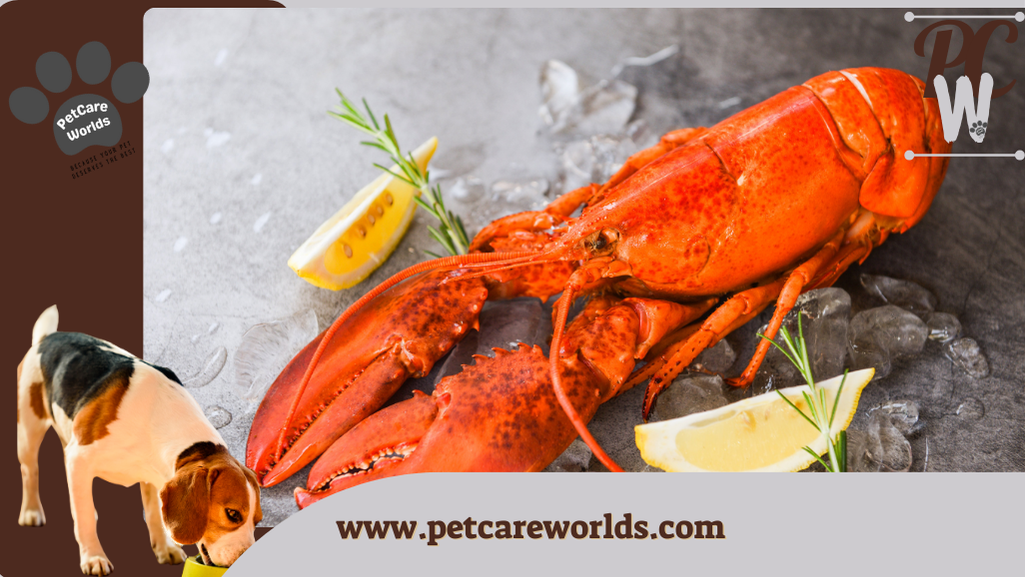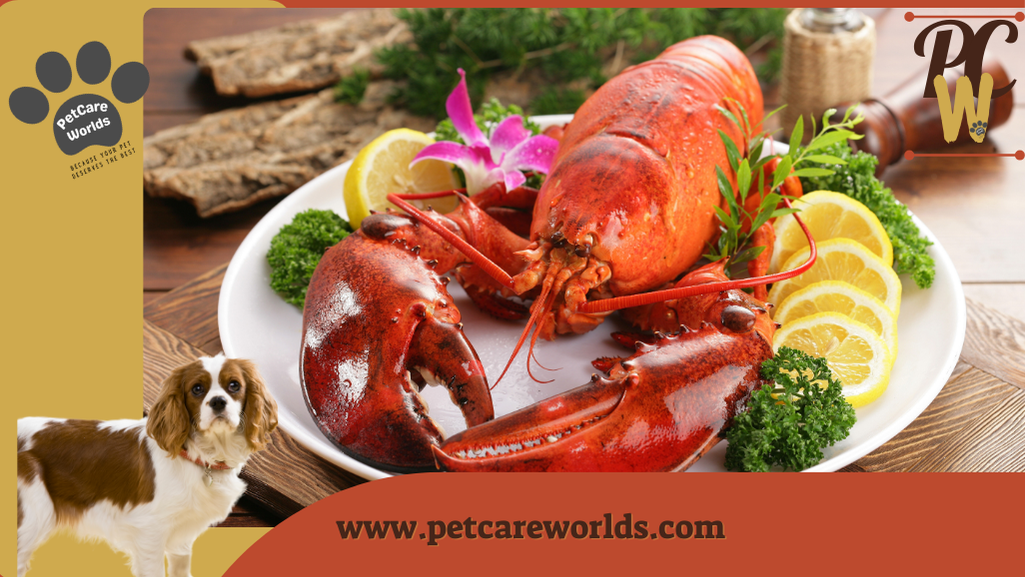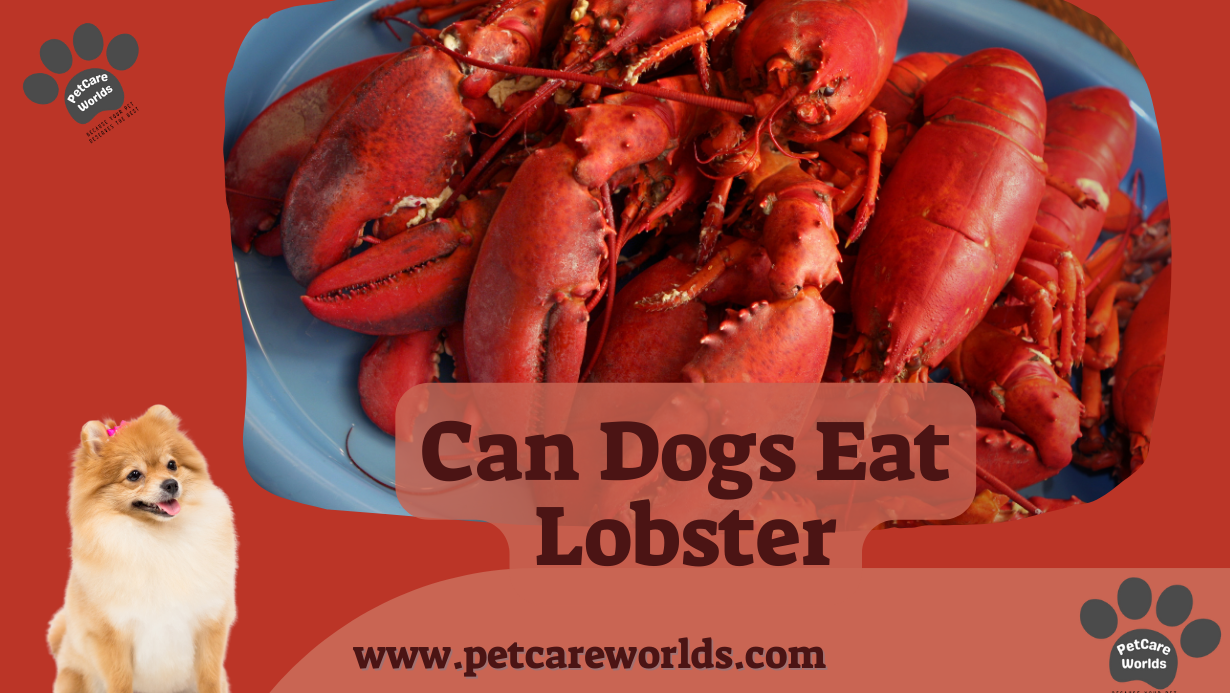Can dogs eat lobster? It’s a question many pet owners have when considering adding seafood to their dog’s diet. Lobster might seem like an exotic treat, but is it safe for your furry friend? While seafood can offer some great health benefits, not all types of seafood are suitable for dogs. Is lobster one of those that should be avoided, or is it an excellent addition to your dog’s meals? Keep reading to uncover the benefits and risks of feeding your dog lobster, and what precautions you should take before introducing it to their diet.
Can Dogs Eat Lobster?
Lobster can be a tasty and nutritious treat, but is it safe for your dog? While lobster isn’t toxic, it’s important to feed it correctly. Some precautions are needed to avoid allergic reactions and ensure it’s cooked properly. Always remove the shell and serve in moderation. Can dogs eat lobster
Should You Feed Your Dog Seafood?
Seafood can offer great health benefits, but it’s not for every dog. When feeding your dog seafood, consider these factors:
- Health conditions: Some dogs may have allergies to seafood.
- Portion size: Too much can cause upset stomach or digestive issues.
- Preparation: Always cook seafood thoroughly and avoid adding spices or butter.
Benefits of Seafood for Dogs
Seafood can provide essential nutrients for your dog. Here are some reasons why it’s a good option:
- Omega-3 fatty acids for a shiny coat and healthy skin.
- High-quality protein that supports muscle growth and recovery.
- Low in fat, which helps with weight management. Can dogs eat lobster
Omega-3 Fatty Acids and Skin Health
Seafood, especially fish, is packed with omega-3 fatty acids. These fats are essential for your dog’s skin and coat health. Regular consumption can help reduce dry skin, shedding, and irritation. Healthy fats also support the immune system and joint health. Can dogs eat lobster
High-Quality Protein in Seafood
Seafood provides a lean source of protein. Unlike red meats, seafood is low in fat and contains high-quality protein that supports muscle development and maintenance. It’s a great option if you want to keep your dog’s diet lean and healthy. Can dogs eat lobster
Variety of Flavors for Your Dog
Not all dogs enjoy the same flavors, and seafood offers a variety of tastes that can keep your dog’s meals interesting. From salmon to lobster, there are many options to choose from. It’s also easy to mix into your dog’s food for added flavor and nutrients. Can dogs eat lobster
Risks of Feeding Your Dog Seafood
While seafood can be healthy, there are risks you should consider before feeding it to your dog. Toxins, allergies, and improper preparation can all cause harm. Always consult your vet before introducing seafood into your dog’s diet. Can dogs eat lobster
Potential Toxins and Heavy Metals
Some seafood can contain harmful toxins and heavy metals. Fish like tuna and swordfish may have high levels of mercury, which can be toxic to dogs over time. Shellfish might carry contaminants from polluted waters. Always choose wild-caught seafood from clean, reliable sources.
Increased Risk of Salmonella and Listeria
Raw or undercooked seafood can carry bacteria like salmonella and listeria. These pathogens can lead to vomiting, diarrhea, and severe infection in dogs. Always cook seafood thoroughly and avoid raw varieties.
The Dangers of Canned Seafood
Canned seafood often contains added preservatives, salt, and spices that are not suitable for dogs. The high sodium content can lead to dehydration, kidney problems, and high blood pressure. Opt for fresh, unseasoned seafood when possible. Can dogs eat lobster

Types of Seafood Dogs Can Eat
Certain types of seafood are great for dogs when prepared correctly. Here are some safe choices:
Lobster and Shrimp
Lobster and shrimp are low in fat and rich in protein. Make sure to remove the shell and avoid seasoning. They can be a treat or part of a balanced diet. Can dogs eat lobster
Wild-Caught Salmon
Wild-caught salmon is an excellent source of omega-3 fatty acids. It supports skin health, reduces inflammation, and enhances your dog’s coat. Cook it thoroughly and remove any bones.
Sardines for Dogs
Sardines are full of nutrients like omega-3s and vitamins. They’re a great option for dogs with joint problems or dry skin. Serve in moderation due to their oil content. Can dogs eat lobster
Cod Fish and Its Benefits
Cod fish is a low-fat, high-protein option that’s gentle on your dog’s stomach. It’s also a good source of vitamins and minerals. Bake or steam cod for the healthiest preparation. Can dogs eat lobster
Types of Seafood Dogs Should Avoid
Not all seafood is suitable for dogs. Some varieties can cause harm. Here are types of seafood you should avoid:
Long-Lived Fish (Tuna, Swordfish)
Tuna and swordfish are known to have high mercury levels. Long-lived fish accumulate mercury over time, which can be dangerous to your dog’s health. Limit these fish in your dog’s diet.
Raw Seafood and Its Risks
Feeding your dog raw seafood can expose them to parasites, bacteria, and viruses. These risks can lead to severe health issues like food poisoning. Always cook seafood thoroughly to ensure it’s safe for your dog.
Fish with Small Bones (Anchovies, Herring, Sardines)
Fish with small bones, like anchovies, herring, and even sardines, can cause choking hazards or damage your dog’s digestive system. Always remove bones or choose fish without them. Can dogs eat lobster

Can Dogs Eat Lobster?
| Consideration | Details |
|---|---|
| Nutritional Value | Lobster is rich in protein and low in fat. It’s a healthy treat when served correctly. |
| Preparation | Remove the shell and avoid seasoning or butter. Cook thoroughly to prevent bacteria. |
| Benefits | Good source of protein, omega-3s, and minerals. Supports skin health and muscle development. |
| Risks | Lobster can cause allergies, especially if your dog has a shellfish sensitivity. It’s best to introduce it gradually. |
| Serving Size | Small portions are recommended, especially when introducing lobster to your dog’s diet. |
“While lobster can be a healthy treat for dogs, it’s important to prepare it properly and serve in moderation to avoid potential risks.”
Can Dogs Eat Lobster? – FAQs
1. Is lobster safe for dogs to eat?
Yes, lobster is generally safe for dogs when cooked properly and served in moderation. Avoid adding seasoning, butter, or other ingredients that can be harmful.
2. Can lobster cause allergies in dogs?
Yes, some dogs may have shellfish allergies. It’s important to introduce lobster slowly and observe for any signs of allergic reactions, such as itching or digestive issues.
3. How should I prepare lobster for my dog?
Lobster should be fully cooked and the shell removed. Avoid any added seasoning, butter, or oils. Serve in small, bite-sized pieces to prevent choking.
4. What are the health benefits of lobster for dogs?
Lobster is a good source of protein, omega-3 fatty acids, and important minerals. These nutrients can support your dog’s skin, coat, and overall health.
5. How much lobster can I give my dog?
Lobster should be served in small portions. It’s a treat, not a regular part of their diet. Start with small amounts to check for any adverse reactions.
6. Can dogs eat raw lobster?
Raw lobster should be avoided as it may contain harmful bacteria or parasites. Always cook lobster thoroughly before feeding it to your dog.
Conclusion
Can dogs eat lobster? Yes, but it should be cooked properly and served in moderation. Always remove the shell and avoid harmful additives for safety.





